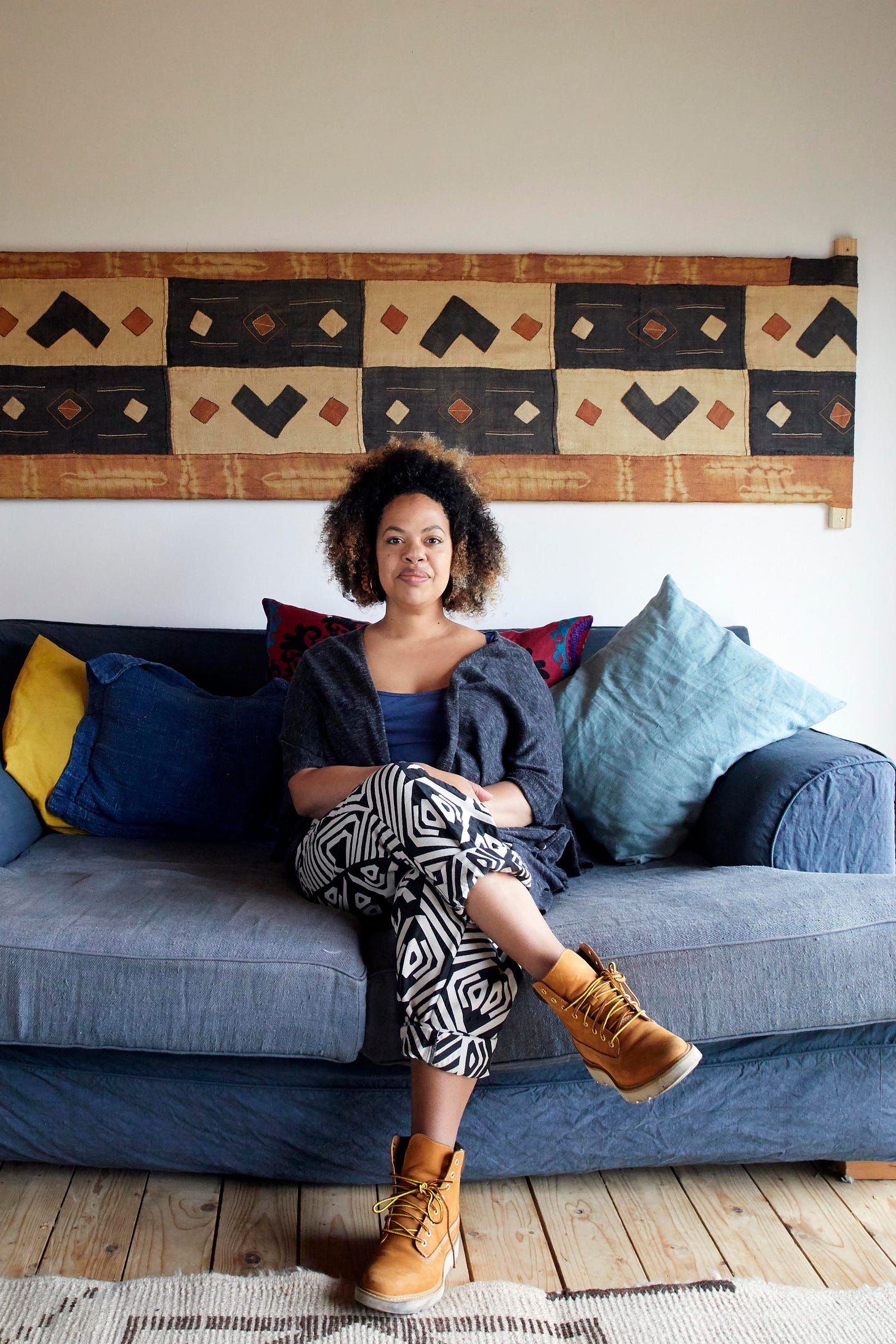Laura Lewis-Paul: “It’s difficult to define mixed people because we’re all so different”
The music tech pioneer on feeling like the odd one out
Hi, welcome back to Mixed Messages! This week, I’m speaking to Laura Lewis-Paul, founder of music tech initiative Saffron Music. Laura is of mixed-Caribbean and British heritage, and grew up in mostly white spaces. Those surroundings affected how she felt about her identity, a mindset she’s since reflected on and shifted. Read how Laura feels today below.
How do you define your ethnicity?
I’d describe my ethnicity as mixed-Caribbean and British. I was raised to use the term ‘mixed-race’ because there weren’t many other choices in the ‘80s, besides much more derogatory terms like ‘half-caste.’
I’ve also described my ethnicity as Black to stand united with my Black community, but I do think it’s important to further define myself as ‘mixed-race’ or Brown, which feels more accurate in terms of my skin colour. My experience is different to someone who is Black or darker skinned than me.
What are your thoughts on the language used to identify mixed people?
There are so many layers to being mixed, it’s difficult to find one definition that suits everyone. Our experiences, identities and heritages are so different.
Did you feel connected to your culture growing up?
I lived with my mum, who is white British, in Swindon. My experience was definitely of being the ‘other,’ ‘minority’ or ‘odd one out’. We lived on a community farm, so the food we ate was pretty bland. I now feel like my taste buds have been dampened and aren’t able to take the spice from my culture, which impacts that feeling of not being ‘Black enough!’
With the majority of my Caribbean family living in either Dominica or the USA, I feel like I’ve really missed out on the storytelling and intergenerational conversations that enrich your childhood. They can give you the confidence to explore your identity, values and stance in the world.
My hair is key in my cultural identity. Even now at 36-years-old, I still get told off by my Great Aunt (from Dominica) for having “unruly” hair. My two-year-old daughter idolises Barbie’s hair, so I continually encourage her to see how beautiful her curly hair is and to be proud of it.
My dad also listened to lots of reggae, dub, blues and folk – he was a big Tracy Chapman fan. Those artists heavily influenced my musical tastes. However, as a teen I noticeably oppressed my musical tastes to fit in with my peers. Working in the music industry too, I’ve sometimes not expressed my genuine likes or dislikes through the fear of having a different view. I didn‘t want to be a minority in those situations.
Can you tell me a bit about Saffron Music?
Saffron Music is the tech initiative I run, which takes an intersectional approach to redressing the gender imbalance in the industry. The music tech industry is currently just 3% women, and we want to increase that figure and create safe spaces for women and non-binary people to grow and learn. I feel like I’m also treading through years of systemic racism and feeling like a token, which I’m on a mission to change.
Did you look up to any mixed people growing up?
Diverse role models weren’t really celebrated, but Neneh Cherry and Bob Marley were two artists who resonated with me. There are noticeably more mixed people for my daughter to see in the media, so we need to continue this trajectory for change.
What's the best thing about being mixed?
The layers of identity that are still to be discovered. There’s a long journey ahead for my own inner conversation and for future generations.
Can you define your mixed identity in one word?
Unique.
Next week, I’ll be talking to author Patrice Lawrence. Subscribe to get Mixed Messages in your inbox on Monday.
Enjoy Mixed Messages? Support me on Ko-Fi so I can continue to grow this newsletter! Your donations, which can start from £3, help me pay for the transcription software needed to keep this newsletter weekly.
Mixed Messages is a weekly exploration of the mixed-race experience, from me, Isabella Silvers. My mom is Punjabi Indian (by way of East Africa) and my dad is white British, but finding my place between these two cultures hasn’t always been easy. That’s why I started Mixed Messages, where each week I’ll speak to a prominent mixed voice to delve into what it really feels like to be mixed.






